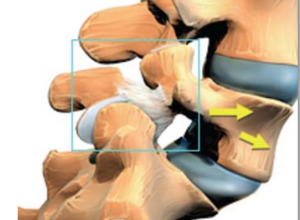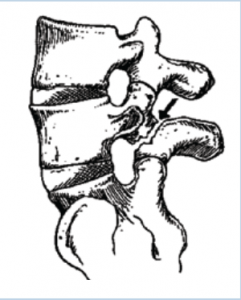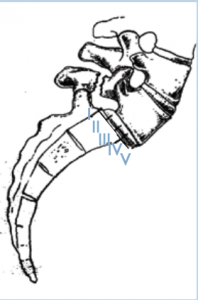
Spondylolisthesis refers to a crack in one of the vertebrae, usually at the point at which the lower (lumbar) part of the spine joins the tailbone (sacrum); this condition can develop as a stress fracture, or it may be congenital.
Because of the constant force on the low back, the fracture may not heal as normal bone. This type of fracture (called a spondylolysis) is simply a crack in part of the vertebra and may cause no problem at all. However, in about 30% of cases, the cracked vertebra slips forward over the vertebra below it. This is known as Adult Isthmic Spondylolisthesis.
Another type is Degenerative Spondylolisthesis, in which slippage develops as a result of arthritis of the small joints of the spine and degeneration of the discs.


Symptoms of Spondylolisthesis may include lower back pain, muscle tightness (tight hamstring muscle), pain, numbness, or tingling in the thighs and buttocks, stiffness, tenderness in the area of the vertebra that is out of place, weakness in the legs, and bowel or bladder symptoms.
Spondylolisthesis may not cause symptoms for years (if ever), or symptoms may appear only after an accident or injury. If there are symptoms, they may include low back and buttocks pain; numbness, tingling, pain, muscle tightness or weakness in the leg (sciatica); increased sway back; or a limp. Standing, walking and other activities usually aggravate these symptoms, whereas rest usually provides temporary relief.

